Today, a personal computer occupies an important place in the life of most people. Without this device in the modern world, we can not do either at work or at home.
One of the components of a computer is a monitor. On its screen, it displays all the information the user needs. The use of modern monitors allows you to work comfortably, for a long time to watch your favorite movies and information from Internet pages, as well as play interesting video games. However, in addition to the fact that this device should show us a high-quality image of the desired picture, it needs to be safe for the user's eyes.
How to choose a monitor for your computer? For this, it is important to consider the desired model based on its parameters. What should they be? To get an answer to this and many other most popular questions that arise when buying a monitor, this article will help.
Process Type Classification
How to choose a monitor for your computer? After all, this component of the PC is acquired for a long time, and the user's comfort during work will largely depend on it.
Today, many well-known world companies present their products on the market for such equipment. These are Apple and Acer, Dell and LG, Samsung and Hitachi, Philips and many others. According to their production technology, monitors are divided into the following:
- CRTs based on a cathode ray tube.
- LCD, or liquid crystal monitors.
- Plasma, whose work is based on the functioning of the plasma panel.
- Projection, in which the screen and the video projector are placed either in one housing or separately.
- OLED monitors manufactured using organic light emitting diode technology.
Retinal virtual monitors are considered the most modern. They are output devices that can focus the image directly on the surface of the retina. In this case, the user sees the picture, as if hanging in front of him right in the air.
Which monitor to choose? The answer to this question is quite simple. The fact is that CRT monitors are currently used little. As for projection and plasma, they are too expensive. That is why the most popular displays are liquid crystal type.
How to choose a monitor? To do this, you need to have an idea of which of its parameters are the most important and which are secondary.
Matrix type
How to choose an LCD monitor? When buying, it is worth asking about the type of matrices available in it. What it is? Matrices are nothing more than a liquid crystal screen of the monitor we choose. Moreover, they are divided into the following types:
- TN + film (TN). This is the cheapest and easiest matrix. It has medium definition and color reproduction, with a shallow depth transmits black. With such a matrix, the viewing angle of the monitor is small. However, not everything is so sad. The TN matrix has some positive aspects. What do they consist of? For example, a very small response time of the matrix. And this parameter is of great importance when using a computer for the game. The name TN + film itself means that the matrix has an additional filter that allows you to slightly increase the viewing angle. In the presence of a broken pixel, a luminous white dot appears on such monitors. Anyone who does not know how to choose a monitor for a computer should remember that displays with the matrix described above are well suited for office tasks.In cases where the screen is needed for watching videos in the family circle, it is better to refuse the TN + film parameters due to the small viewing angle.
- IPS matrix. In this series there are such varieties as S-IPS, P-IPS, H-IPS, e-IPS and AH-IPS. All of these matrix monitors have remarkable color rendering quality. They give out a picture that has good contrast and a significant viewing angle, which reaches 178 degrees. However, the response time of the matrix is small. If there is a broken pixel, a black dot appears on such an LCD screen. Those who are wondering how to choose a monitor should know that the described matrices are capable of performing any task. They are especially good for processing photos. It is IPS matrices that may well be mentioned in the list of important screen characteristics when answering the question “How to choose a monitor for a designer?”.
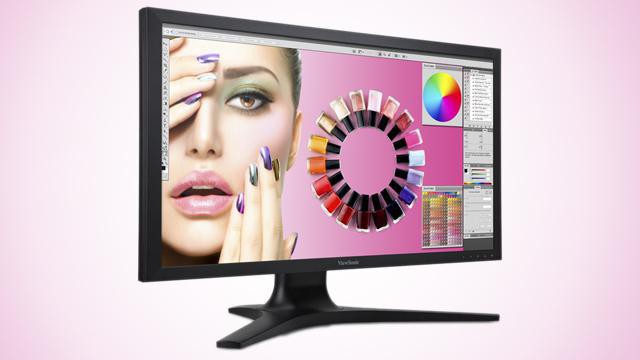
- VA matrices. These include types such as WVA, SVA, and PVA. A monitor with such matrices is a universal budget option. Its characteristics are a middle ground between IPS and TN. Such screens have good picture clarity and high quality color reproduction. In addition, the viewing angle of the monitor is at a fairly good level. The only drawback of this matrix are halftones that are poorly transmitted by it.
- Pls. This matrix is a modern and cheapened version of its IPS-brother. At the same time, it perfectly reproduces colors. High and clear images appearing on the screen. There are no complaints about the viewing angle of the PLS matrix. However, today it can be attributed to the news. That is why the cost of such a matrix is still very high.
Screen coverage
Which monitor to choose when buying a laptop or personal computer? All of them may have a different coating, which can be matte or glossy. What to choose?
In the first type of coating, the images appearing on the screen will appear faded. Gloss when hit by the rays of light on the display will turn into a kind of mirror.
How to choose a monitor based on this parameter? After all, manufacturers produce liquid crystal panels with the same matrices, but with different coatings. In order to decide on a purchase, it is necessary to consider the advantages and disadvantages of each of these options.
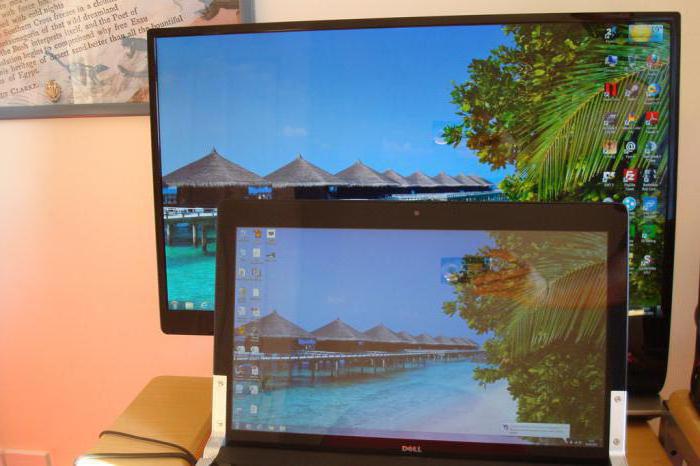
The quality and quantity of colors displayed on glossy monitors is up to standard. These are bright screens that give the user a rich, contrast and color-intensive picture. Black has a special depth for glossy monitors. These qualities will undoubtedly favor the choice of such displays. However, they also have their drawbacks. This applies to the reflection of light rays. These glare prevent the user sitting at the window or on a sunny day in the fresh air.
Matte monitors are another thing entirely. They have an antireflex coating that allows you to quench glare. This allows you to work with great comfort in bright natural or artificial lighting. Among the disadvantages of matte displays, their fading can be distinguished. All the colors in the images displayed by them look a little dimmer than with the glossy version.
How to choose a monitor based on this parameter? Everything will depend on the goals of the buyer. Anyone who is going to buy a monitor for a desktop PC, which will stand in a room with not too intense lighting, should stop at a glossy finish. After all, with him the picture will be brighter and more saturated.
When buying a laptop, which will most often work in the fresh air, you need a screen with a matte finish. The same conditions exist when choosing a monitor for a stationary PC. If he stands in a room with good lighting from a window or from lamps, then a glossy coating in such conditions will only interfere with work.Of course, the AR coating of the matte display is not able to fully protect the screen from glare, but they will still be less noticeable.
It is simply impossible to create ideal conditions for the entire life of the computer. And if today the indoor table is far from the window, then tomorrow it can be rearranged closer to the sunlight. That is, choosing a monitor, you always have to make a kind of compromise. After all, manufacturers have not yet come up with a screen switch that would allow you to change the type of coverage. This is simply impossible today.
Screen size
This parameter is measured in inches and counted diagonally. To date, the most common monitor sizes are those that range from 18.5 to 27 inches. However, there are record holders here. There are separate models whose screen size is 30 or more inches.
The best monitors for offices that work with a text editor are 18.5-20.1 inches in size. This is the most economical display option.
Monitors with diagonals from 21.5 to 24 inches are by far the most popular option. When using them, it is comfortable to work with programs that process the image, as well as with text. On such monitors it’s nice to play games and watch movies.
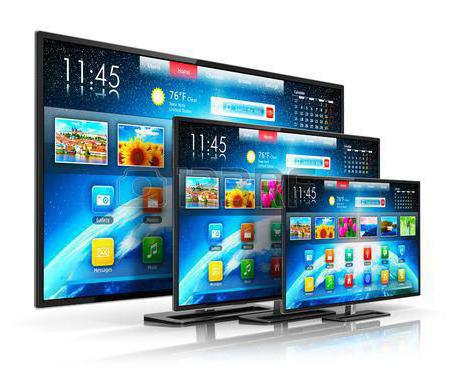 Screens larger than 27 inches are recommended for users who buy a monitor for working in video and photo editors. These displays are great for watching movies. Among the models of such impressive devices, one can also find those in which the manufacturer has provided a curved screen. This option should be considered by someone who is wondering how to choose a monitor for games. Curved models are perfect for moviegoers. Such screens will allow you to dive deeper into the game or into the plot of the actions taking place on the screen.
Screens larger than 27 inches are recommended for users who buy a monitor for working in video and photo editors. These displays are great for watching movies. Among the models of such impressive devices, one can also find those in which the manufacturer has provided a curved screen. This option should be considered by someone who is wondering how to choose a monitor for games. Curved models are perfect for moviegoers. Such screens will allow you to dive deeper into the game or into the plot of the actions taking place on the screen.
Screen size - this is the most understandable when choosing a monitor characteristic. So it will not be difficult for the user to decide on his choice.
Aspect ratio
This is another important factor that should be considered when choosing a monitor. Today it is difficult to find almost square screens, the sides of which are in a ratio of 5: 4 or 4: 3. These are usually small budget models.
Manufacturers today offer widescreen screens. They are 16:10 and 16: 9 in size. Such monitors are convenient both for work and for viewing widescreen movies. They are good for those who are interested in computer games.
Today, there are monitors whose format is ultra-wide (21: 9). Such screens are needed for those who are forced to simultaneously open many windows. These are design engineers, as well as users who analyze any data or are involved in video editing.
When choosing a monitor, most buyers pay attention to the 16: 9 format. After all, most games, sites and programs are optimized for it. It is also nice to watch movies on such monitors. The only drawback is that less information is placed vertically on the screen. This happens when working with office programs or with a browser. In this regard, manufacturers offer monitors with an aspect ratio of 16:10. When viewing movies on such screens, black bars will appear above and below, but traveling on the Internet and working with such displays is much more convenient.
With very large diagonals of monitors (over 30 inches), the 21: 9 format is sometimes used. Such models allow you to comfortably work with video and graphics. At this point, you should pay attention when choosing a monitor for design work. However, such users sometimes use two or three monitors at the same time.
Resolution
This is another important parameter to consider when choosing a display. Monitor resolution is nothing but the aspect ratio of the screen, which is expressed in pixels.The more of them, the clearer the picture becomes and the more information can be displayed on the screen. However, it is worth considering that in this case the text and other elements will become much smaller.
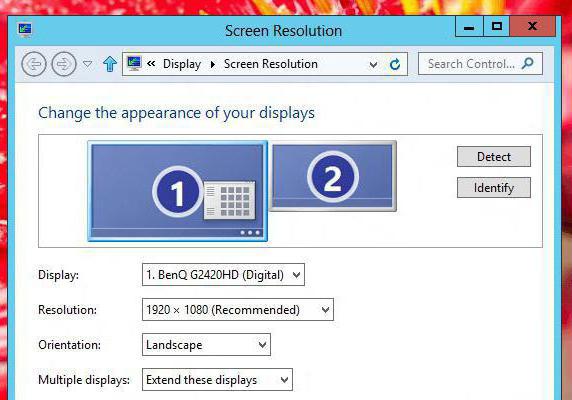 With small screen sizes up to 21.5 inches, a remarkable resolution is one that has a value of 1366 x 768 pixels. If the model is 24-inch, then its resolution should not be lower than 1920 x 1080, and 27-inch screens will give a high-quality picture with the values of this parameter not less than 2560 x 1080 pixels. All these values are relevant for the 16: 9 format.
With small screen sizes up to 21.5 inches, a remarkable resolution is one that has a value of 1366 x 768 pixels. If the model is 24-inch, then its resolution should not be lower than 1920 x 1080, and 27-inch screens will give a high-quality picture with the values of this parameter not less than 2560 x 1080 pixels. All these values are relevant for the 16: 9 format.
Today, manufacturers offer monitors with a resolution of 3840 x 2160 pixels. However, there is still little content for them. Those who are involved in video or photo processing should take a closer look at such models. After all, their purchase will guarantee that in a few years you will not have to update the equipment. But it should be borne in mind that their cost significantly exceeds the price of monitors with lower resolution. In addition, these displays will place increased demands on the graphics card and processor.
Screen grain
This is another parameter that affects the quality of a computer’s image. Under the grain of the screen understand the size of the smallest point in the image. How to choose a monitor for this parameter? When buying a particular model, it should be borne in mind that large grain allows you to better see small fonts. This is especially true for users with low vision. Insufficient clarity of small fonts occurs on monitors with a small screen size and with fine grain. Scaling will help to avoid such a problem. However, not on all programs and not on all sites it can be executed correctly. In addition, when scaling, the clarity of letters is often reduced.
On the other hand, coarse grain does not please the eye when displaying, for example, the main lines in the photo. That is why the final choice is left to the buyer. One of the most comfortable options for 24-inch monitors is considered a grain size of 0.27-0.28 mm.
Response time
This characteristic indicates how fast the pixel changes its brightness. At the same time, the response time of the display, together with the refresh rate, affects the quality of the dynamic scenes displayed on the screen. If the monitor is purchased for games, then this parameter should pay special attention. It is desirable that the refresh rate be in the range from 120 to 144 Hz, and the response time should not be more than 10 seconds.
Contrast
Another parameter that you should definitely pay attention to when choosing a monitor is the brightness value of the displayed white color to the black tone displayed on the screen. This is the contrast ratio. This parameter is often replaced by dynamic contrast.
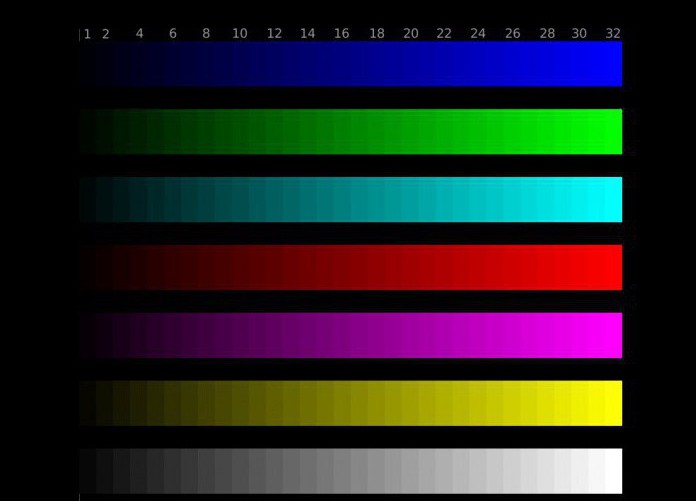
This image characteristic is determined when measuring black at a minimum of backlight, and white at its maximum.
It is advisable to purchase a monitor with a brightness of 220-250 cd / sq. m. In this case, the static contrast will be at least 1000: 1.
Ergonomics
The monitor must be adjustable in height. It is desirable that in it it was possible to produce a change in the angle of inclination. All these characteristics are useful to the user for more comfortable work. To date, the manufacturer offers a number of models in which the screen can be flipped vertically. In individual monitors, it is possible to mount them to the wall.
When sharing multiple screens, the most successful will be a model that has narrow frames. They will not spoil the overall picture during games or at work.
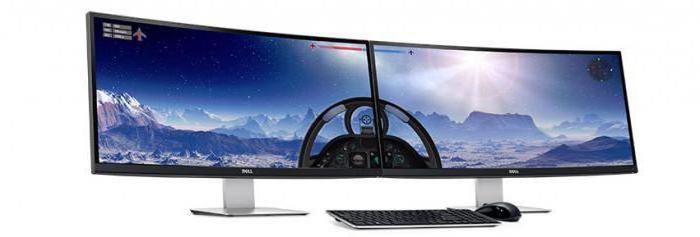
Another important point is the availability of ports for connecting equipment that will be used in conjunction with the monitor. When choosing live, you should pay attention to the uniformity of the backlight.
For comfortable and quality work
After purchasing the desired model, you will need to configure the monitor.This is not the last task, the implementation of which will allow you to get a clear and high-quality image. The fact is that the manufacturer’s settings are always somewhat inflated in contrast and brightness, because the factory simply does not deal with this issue.
You can configure your computer with a program (for example, Nokia Monitor Test), or with an operating system that provides for these works.
It is recommended to start this process by studying the buttons located on the monitor. If necessary, you can read the instructions that came with the device. During operation, it is important to provide competent lighting. The monitor should not be directly exposed to sunlight or light from a 200 W bulb. Otherwise, the settings will be significantly distorted.
The brightness on the monitor must be adjusted so that the black colors, such as a suit and shirt, are separate parts and do not merge into one. A little harder to adjust the contrast.
You can create high-quality image on the screen with the help of software. To do this, press the start button and enter the word “calibration” in the search bar. After starting, the program will offer the user a series of tests to adjust the image.
SyncMaster Monitors
Major changes in the TFT LCD display market have come along with the release of these new products. They led to the introduction of a modern, new and very fashionable design.
Interestingly, the SyncMaster monitor was developed with the participation of the well-known automobile company F.A. Porsche This, without a doubt, was reflected in the exclusive design of the device, which resembles a sports car.
Samsung, when releasing these monitors, uses technology patented by it, which makes it possible to apply all the latest innovations in the industry. This greatly improves the evaluation criteria of the display, such as its viewing angle, contrast and brightness, as well as the response time of the pixel.
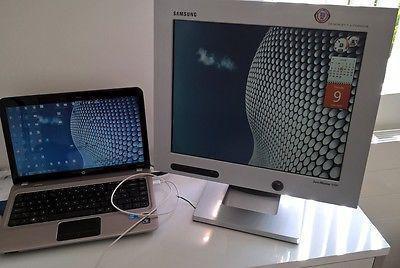 One such model is the SyncMaster 171 P. It has a viewing angle of 170 degrees. Moreover, this option allows you to see the picture well, not only horizontally, but also vertically. If we consider the model SyncMaster 151 P, then the values of the viewing angle in it are slightly less. Vertical it is 150 degrees, and horizontally - all 160.
One such model is the SyncMaster 171 P. It has a viewing angle of 170 degrees. Moreover, this option allows you to see the picture well, not only horizontally, but also vertically. If we consider the model SyncMaster 151 P, then the values of the viewing angle in it are slightly less. Vertical it is 150 degrees, and horizontally - all 160.
As for the brightness, then it is quite high for both models under consideration. The contrast ratio of the SyncMaster 151P is 450: 1, and that of the SyncMaster 171P is 500: 1. These monitors are also good for their pixel response times. It is less than 25 seconds.
Models of the Korean manufacturer offer good screen resolution. It is 1024 x 768 for the 151 P monitor and 1280x1024 for 171 P.
And, of course, innovative models have a plug-and-play function. This technology allows you to easily and within a short period of time make the necessary settings and adjustments. These models come with a CD. It contains the drivers that are required to install the devices.
Monitors from the Samsung company possess not only remarkable technical characteristics, but also high functionality. That is why they become indispensable assistants both when working in the office, and during home use. A big plus when choosing these models is their elegance. After all, this is becoming important not only in the fashion industry, but also in the computer equipment market.








